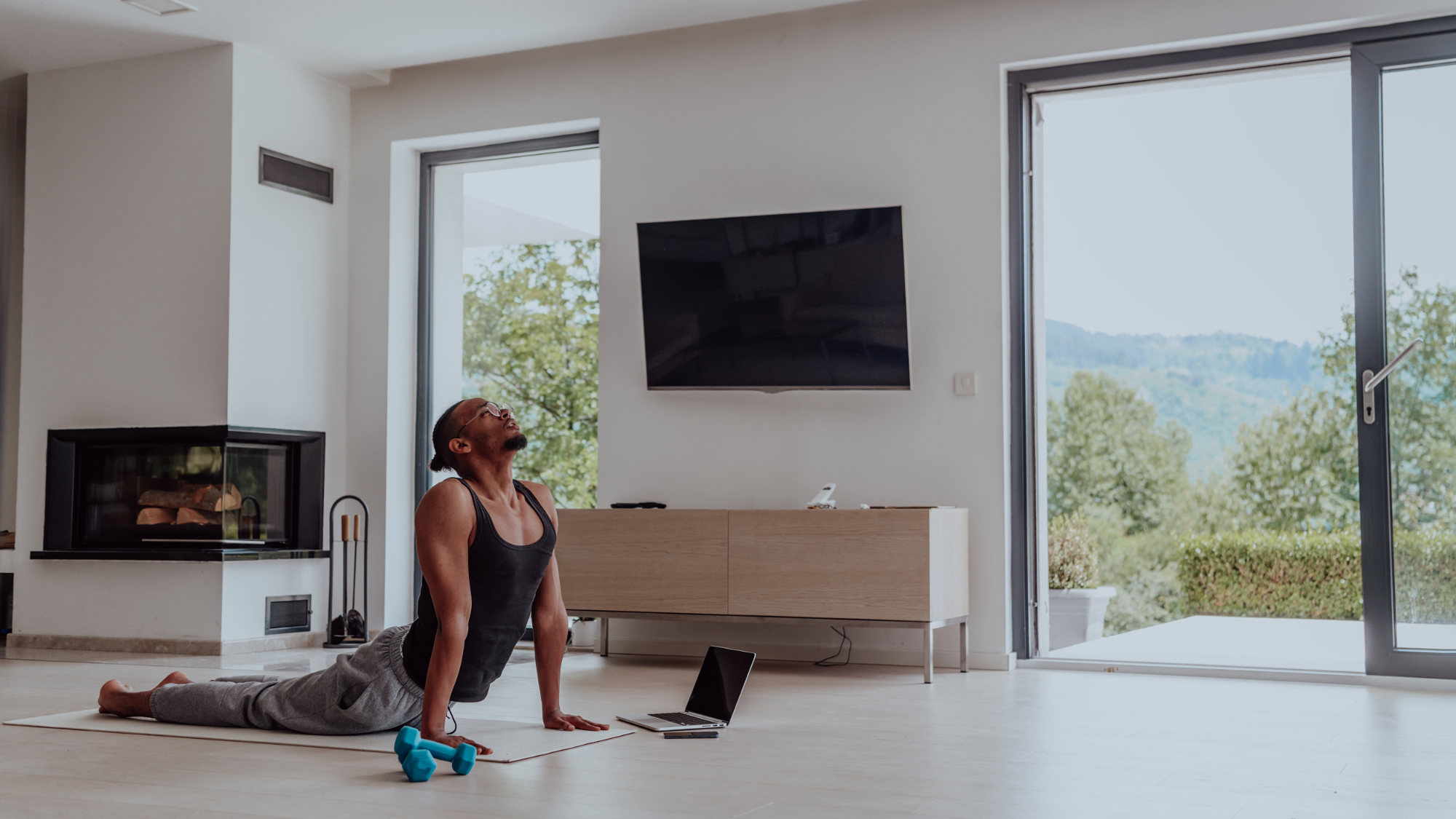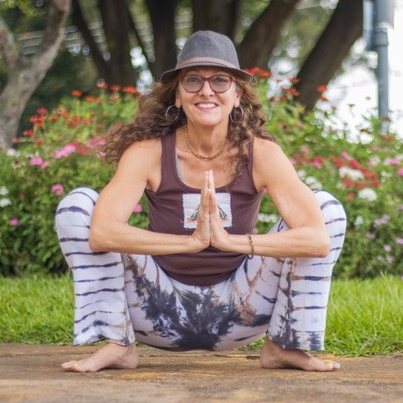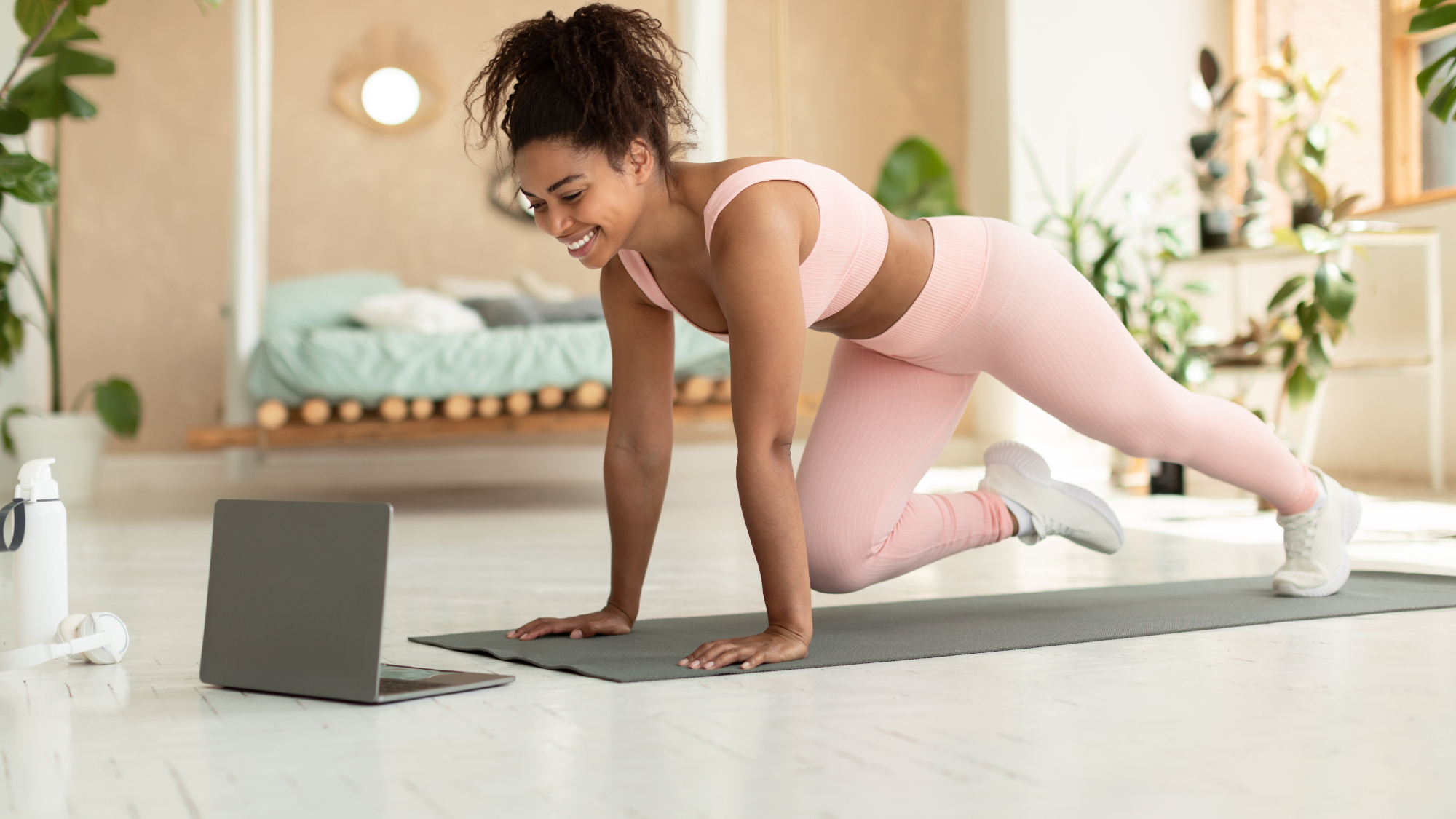The benefits of yoga for your body and mind, according to a yoga teacher
A regular yoga practice can boost your balance, build strength, and protect your mind


You may have heard a friend, coworker, or family member talk about the benefits of yoga. Many people try it a few times, find that it eases their body and calms their mind, and make it a regular part of their weekly exercise routine.
Developing a consistent yoga practice can boost your balance, strengthen your core, and work your whole body. But it's not just the physical benefits that make people want to invest in one of the best yoga mats and take a yoga class.
If you've considered learning how to meditate to still your mind, yoga has a similar effect, except you don't have to sit still in silence to develop a connection between your mind and body and boost your wellbeing.
We spoke to certified yoga therapist and author Deborah Charnes to explore all the benefits of yoga, including improved flexibility, increased strength, and an enhanced sense of mindfulness, and whether 20 minutes a day is enough to feel the benefits of yoga.

Deborah Charnes is a Certified Yoga Therapist, author, holistic health coach, and founder of The Namaste Counsel. Deborah has taught yoga in India, the U.S., Latin America, and Italy. Her aim is for people to be their healthiest and happiest through simple lifestyle changes.
1. Yoga boosts your flexibility
One of the most popular reasons to take up yoga is to improve your flexibility, according to a report from the Yoga Journal and Yoga Alliance. It's a wise move, too, as research published in the Journal of Bodywork and Movement Therapies found that just one yoga session a week can improve flexibility.
"Our modern lifestyles wreak havoc on our bodies. We're not meant to sit for several hours in chairs, couches, or cars. Those habits will definitely reduce your flexibility," says Charnes. She suggests easing into a hip-opening bodyweight squat to get started.
"If you can't squat comfortably, sit on a curb, step, or yoga block, or practice butterfly pose first. The longer you hang out low, the better," advises Charnes. You might find it challenging at first, or worry that you're not flexible enough for yoga at all.
Start your week with achievable workout ideas, health tips and wellbeing advice in your inbox.
However, Charnes says that yoga is for everyone; all ages and abilities. "Don't ever tell yourself, 'I'm not flexible' or 'I can't do that' Find positive affirmations like 'I welcome growth' or 'I enjoy moving my body'," she suggests.
If you're looking for an accessible way to boost your flexibility without taking on a full yoga class, you can use these yoga stretches for beginners to ease into the practice and improve your mobility.
2. Yoga builds strength all over
You might imagine that you'd need to lift weights to get stronger, but, fortunately, that's not the case as developing a regular yoga practice builds functional muscle and strength, according to research published in the International Journal of Yoga.
The same research found yoga can also help prevent age-related deterioration of muscular strength too. And if you're suffering aches and pains? Learning how to do yoga with bad knees to build strength and protect your joints is a solid strategy.
And if you're suffering from lower back pain, Charnes believes that core yoga to build up the muscles around your stomach, including your abs, can help take the strain off your back and ease any chronic pain you've been feeling.
But where to start? Thankfully, most yoga poses incorporate the core. "Two excellent exercises are the boat pose and plank. Each can be modified based on your current core strength," says Charnes.
Try to hold each pose for a few seconds, and you can gradually increase the time as you get stronger. "The test of mental and physical strength is to hold for as long as possible Practice every day, and try to hold a few seconds more with each attempt."
3. Yoga improves your balance

Working on your balance doesn't have to mean holding a complex yoga pose, as a good sense of stability can make everyday tasks like reaching up high, walking down stairs, or carrying groceries much easier.
Fortunately, yoga can help here, too. According to a review of previously published research in The Journal of Alternative and Complementary Medicine, a regular yoga practice can improve your balance, although the team noted that more studies are needed.
Some balance-boosting yoga poses like a headstand or crow can be quite challenging, which is why you need a combination of core strengthening exercises and regular hip mobility yoga flow sessions to build up to these more advanced poses.
Alternatively, Charnes suggests taking on more accessible moves initially. "Simpler balance poses are the tree and dancer poses. You can even put one hand to the wall if needed [to stabilize yourself]," says Charnes.
4. Yoga is good for your mind
Our lives are busy and stressful, which is why people often turn to meditation or yoga to unwind. It's a popular idea that yoga can reduce stress, but is there any science behind it?
According to a meta-analysis (a study of studies) published in the Psychoneuroendocrinology journal, yoga asanas (poses) are an effective way to boost your wellbeing, reduce stress, and develop mindfulness.
The researchers also found that yoga postures lowered the markers of stress, including reduced cortisol levels (your body's stress hormone), a lower resting heart rate, and reduced blood glucose.
But mindfulness is a distinct benefit of yoga as well, helping strengthen the connection between your body and mind and encouraging you to focus on the present moment rather than get caught up in thoughts.
Getting into a yoga pose requires you to pay attention to how your body feels, making small adjustments until everything clicks into place. This is similar to the way you focus on your breath during a meditation session.
"Mindfulness in yoga is about connecting our bodies and minds," says Charnes. But does that mean dedicating our days to a mindful yoga practice? Not necessarily, as you can bring mindfulness with you wherever you go.
"A daily mindfulness practice can be as simple as appreciating the color, scent, and flavor of your meals, taking a mindful walk and tuning into the birdsong, the feel of the breeze and sun’s rays on your skin, or the rolling of your foot from heel to toe with every step," says Charnes.
How often should you do yoga?
It comes down to what is realistic for you and your lifestyle — don't be put off from yoga because you can't dedicate up to an hour per day to your practice.
"My motto is yoga anytime, anywhere," explains Charnes. If you're struggling to find time for an extended session, then you can use short practices like this five-minute yoga routine to move your body when you have a spare moment.
And once you've learned a few of the poses, you can integrate these into your day wherever you are, "even if just for ten minutes in the grocery store line, in the shower, or as you commute to work," says Charnes.
Is 20 minutes of yoga a day enough?
Although some yoga classes last up to an hour, 20 minutes of yoga each day is plenty of time to move your body, still your mind, and get some of the benefits of yoga too.
"Yoga does not, and should not, be confined to an hour on a yoga mat," says Charnes. So start where you are and aim to keep up a realistic but consistent practice for yourself.
There's also a fairly modern idea that you have to quantify your movement, train for hours, and hit a personal best for it to have any value, but that's not the case — yoga can be an excellent self-care idea for when you just want some time to unwind.
Abby Driver is a freelance health writer and qualified fitness instructor based in Cornwall. Away from her desk she enjoys exploring the Cornish coast path, sea swimming and experimenting with new recipes.
